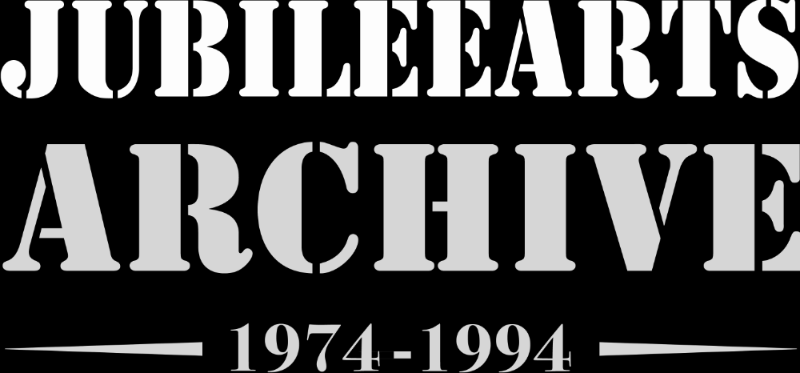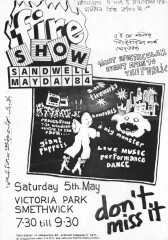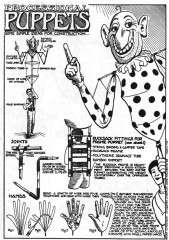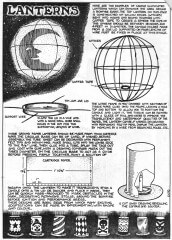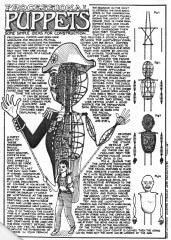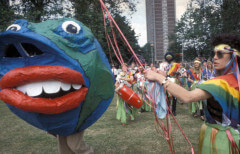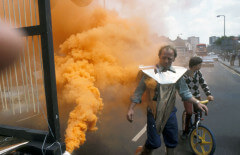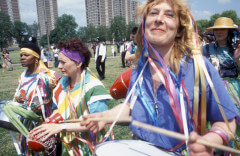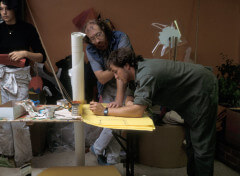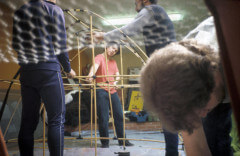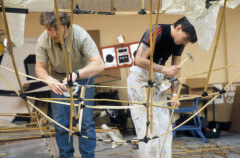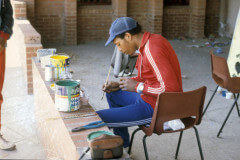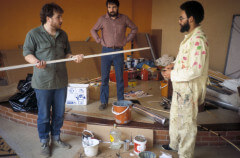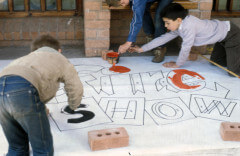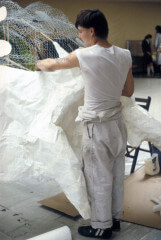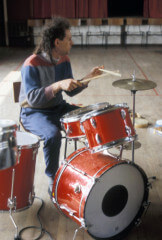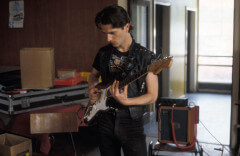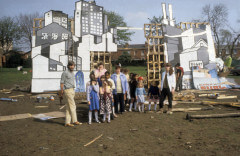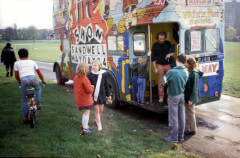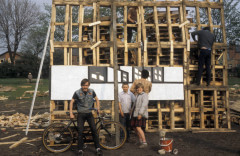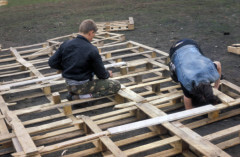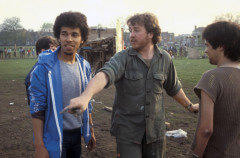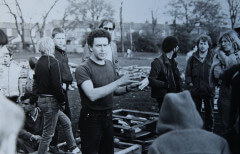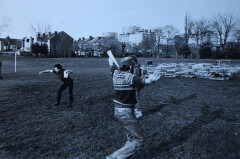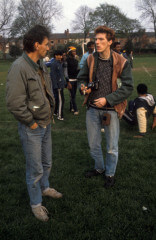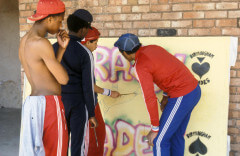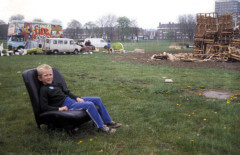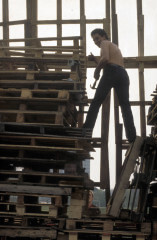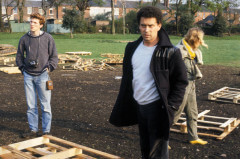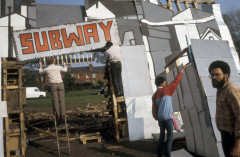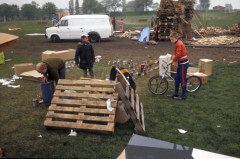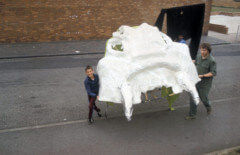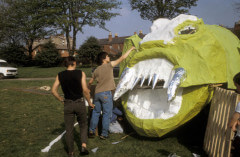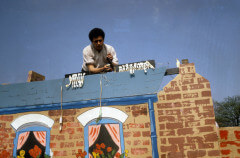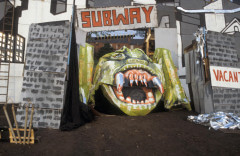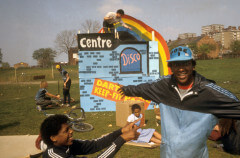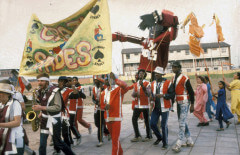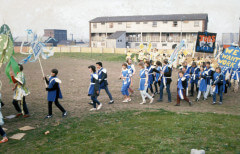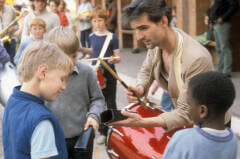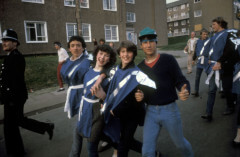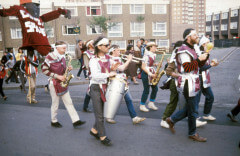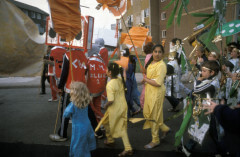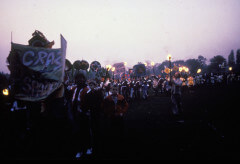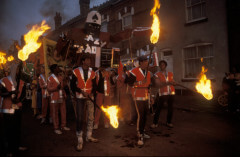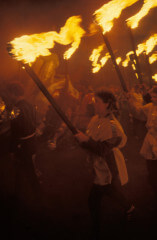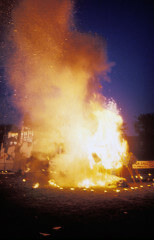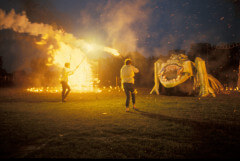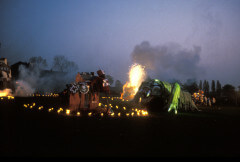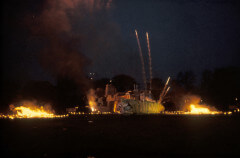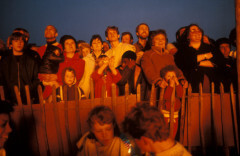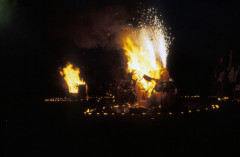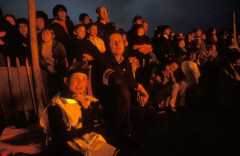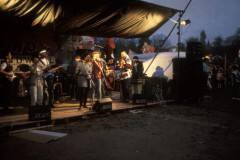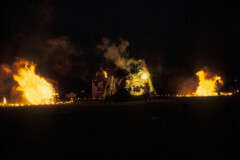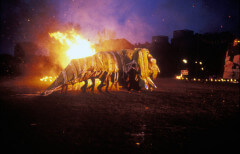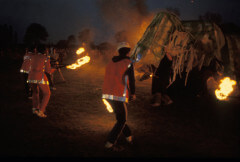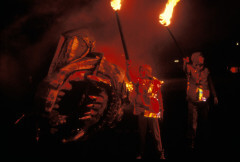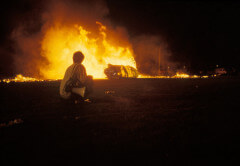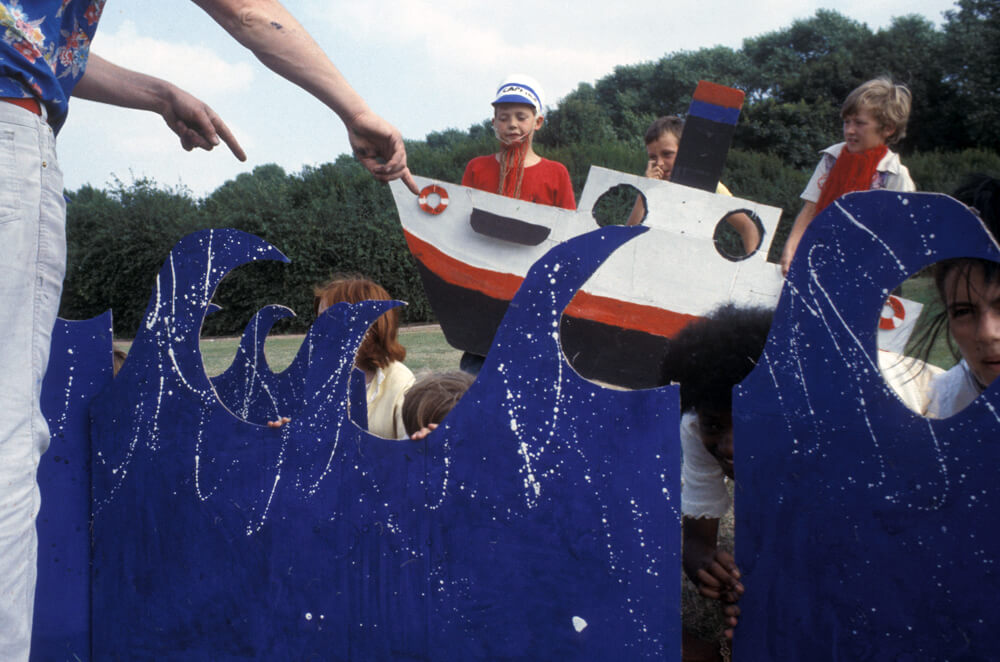Back in 1984, in Victoria Park, Smethwick, Jubilee staged its first truly self-proclaimed multimedia pageant, a collaboration with Cultural Partnerships of London. At that time, multimedia had a different meaning – back it meant pyrotechnics, large constructions, mechanical junk and otherwise, a thirty piece live band of musicians and non-musicians, some 250 local people in strange and garish costumes, body poppers, huge puppets, with immense backdrops that had taken over three weeks to construct and that you would burn down in one evening.
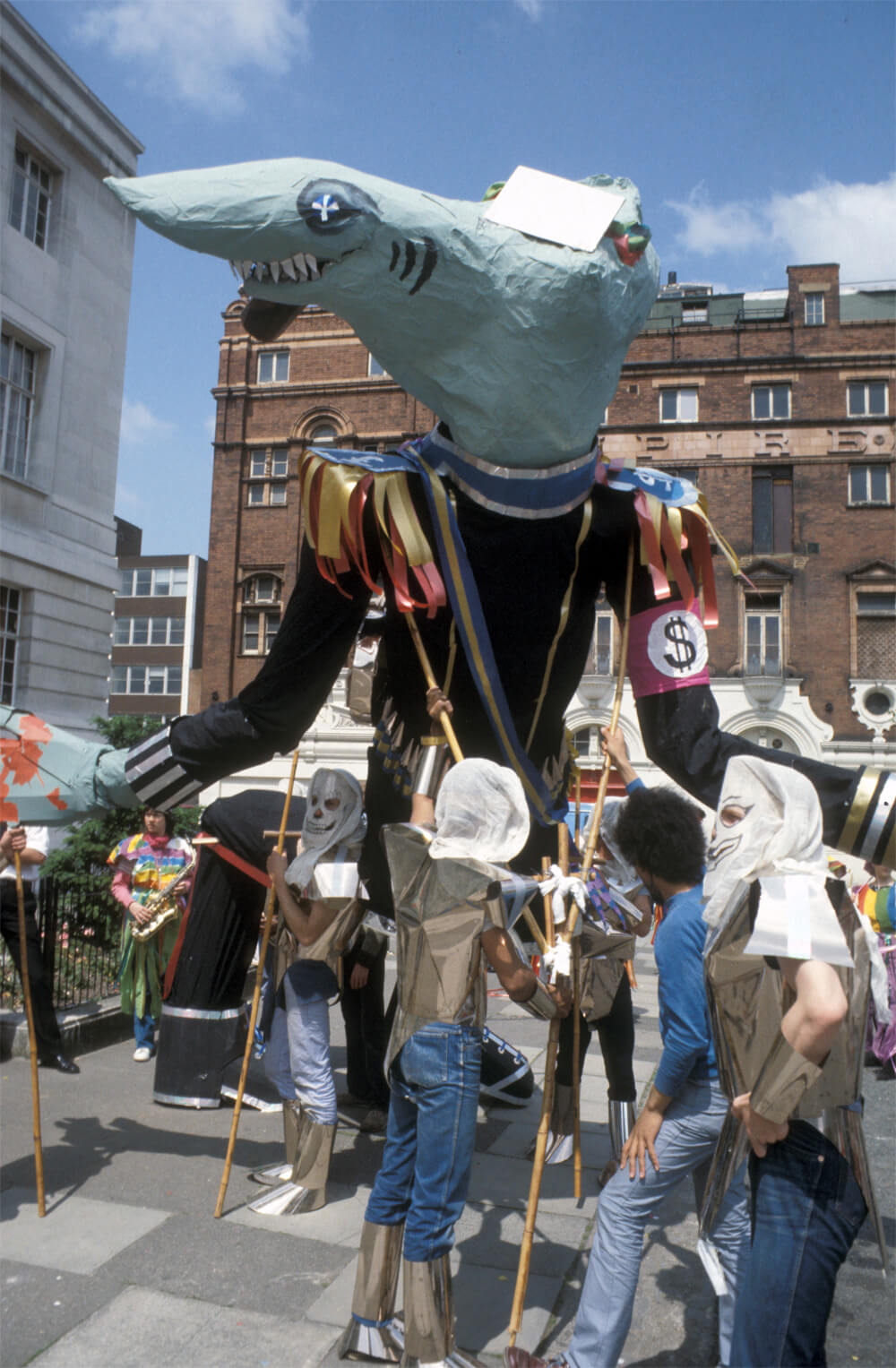
Since it’s beginning Jubilee Arts had been involved with May Day celebrations, working with trades councils in Sandwell, the Black Country and in Birmingham – “with varying degrees of success. That’s to say, nothing spectacular” as a worker report from the time put it. As an active member of the national Association for Community Artists (later the Shelton Trust) it had strong contacts with other community arts groups.
The previous year, Jubilee members had participated in the annual Hackney Festival, along with members of West Smethwick Community Association, working with Cultural Partnerships, a group who had recently split from Freeform Arts Trust (one of the first London community arts activist groups). They made large things. Cultural Partnerships had also been commissioned to create a Fireshow in Crewe to mark the establishment of a new community arts Group, The Wholeworks – and having visited that event with council officers, Jubilee proposed a collaboration in Sandwell. Victoria Park was the venue selected, as this had particular problems with low audiences for council events.
The aim of the fireshow was stated as: ‘to bring together a number of locally-based community based groups in Sandwell and people of all ages and cultural identities to co-operate and celebrate their backgrounds together during the event.’ In planning documents we find it was ‘intended that the event included a bonfire, fireworks and large-scale constructions to form a performance orientated event with the groups costumed and making their contributions in the form of dance and music’
Firstly, musician Louis O’Neil from Cultural Partnerships began early in the year running workshops in Smethwick with a key partner, the Community Association of West Smethwick, who had their own community artist, Harry Henderson. As an experienced Fireshow-er, Louis helped the early planning and logistics of putting o such an event. (He was also involved in setting up Smethwick Music Workshop, who contributed to the event.) Public meetings to encourage participants were held in the four locations proposed for workshops: Coneygre Youth Centre; Farley Park Centre, Greets Green; CAWS itself on West Smethwick estate; and at Windmill Lane Community Centre, Smethwick.
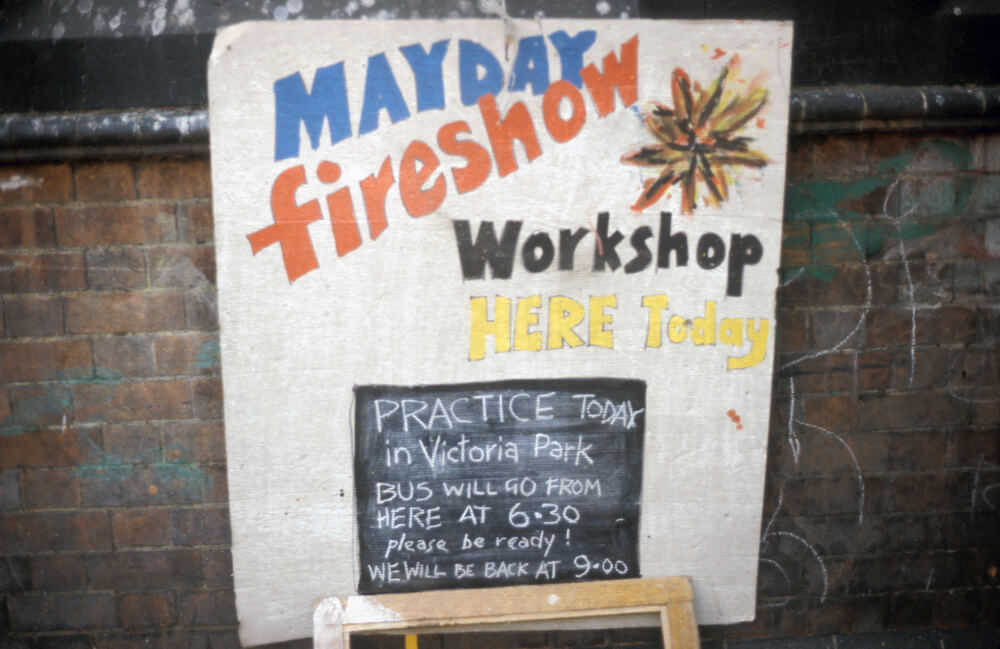
“You mean this May Day? I thought you were talking about next May. You know how Sandwell has a particularly good safety record for bonfire and firework events, but I have to tell you that it is the very nature of a foreshow that will send shivers down statutory spines.”
– Bob Lloyd, Director of Recreation & Amenities Division in January 1984. Nevertheless he pulled out the stops to make it happen. The local police also took a rather relaxed view to the idea of young folk running around the streets brandishing flaming torches.
The main team came on board in April for a concentrated block of work with more than 100 volunteers. Smethwick worked to build staging sets and 15-foot processional puppets. A group of young lads from West Bromwich and Friar Park took responsibility for travelling round on the Bus to collect wooden pallets for the bonfire, delivering it to the park (and providing security). They came back with more wood than was needed, and in the end constructed three bonfires. Costumes were made at all the venues. The pyrotechnician from Cultural Partnerships, Graham Downes, worked closely with the local authority officer responsible for the annual bonfire and firework displays, Paul Tierney (who went on to serve on Jubilee’s board of management for many years).
The theme of the event came from conversation with participants at the outset. A report on the project describes it this way: ‘The response from groups was one of unsureness, ideas floating around about how Sandwell as part of the old highly industrialised Black Country had been particularly badly hit by the recession, high numbers of young unemployed, depression, apathy – this was what needed to be burnt, the negative things destroyed, the positive aspects celebrated… it seemed to fall back on a formula, the people vs the monster of apathy and depression…’
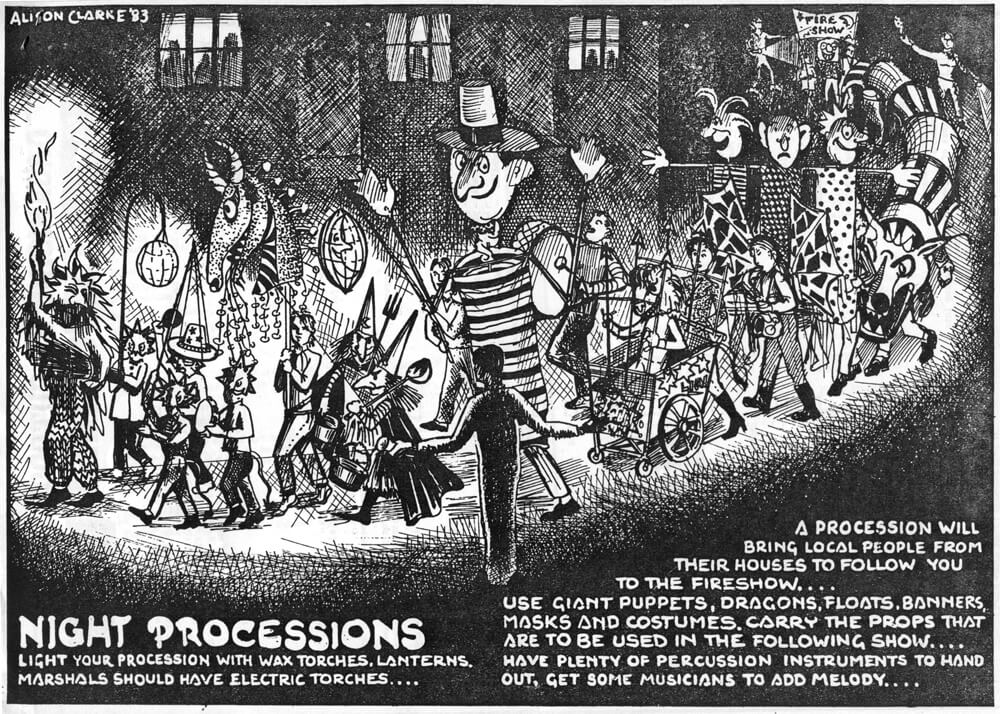
Image from Leicester City Council leaflet, mid 1980’s
‘In the last week before the event, the music workshop started intensive rehearsals, the number of musicians involved increasingly day by day. Last minute costume making for extras extras led to constant visiting of local market stalls for materials as the groups grew…’
– from Project Report, June 1985
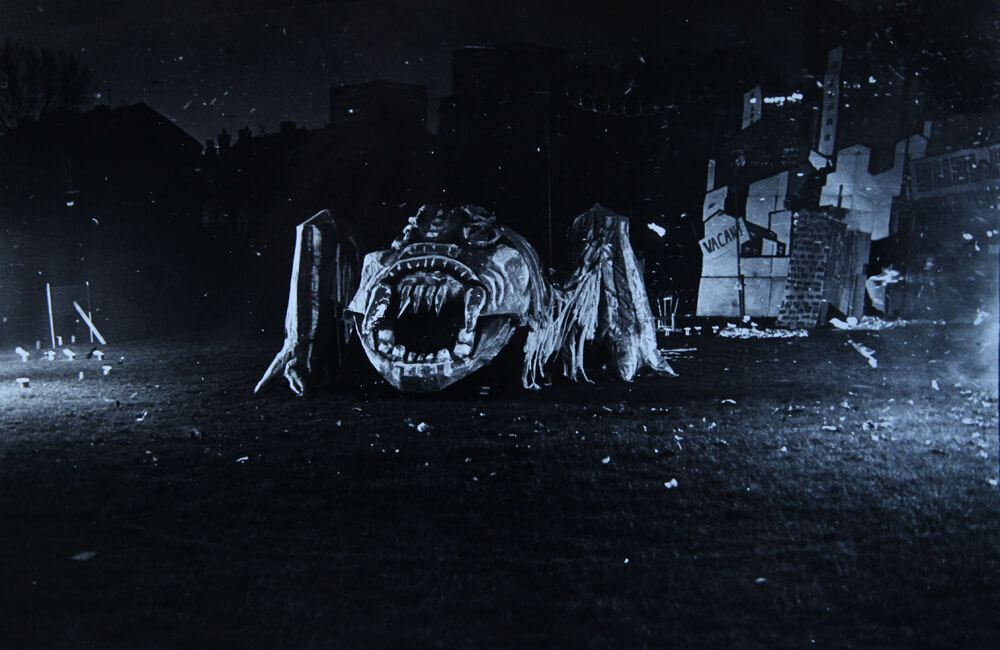
The evening began with all participants, over 200, processing from the Windmill Centre through the streets towards the park as dusk fell, accompanied by a street band. When they arrived at the park, the full 20 piece band began to play, the soundtrack of the evening. The story was simple: people enjoying themselves in the park, outside a community centre and a youth centre (both in reality mini-bonfires), when the Monster of Apathy and Depression comes forth to ruin their fun, burning down their centres and dispersing people. The people find back, push the creature back to its black and white lair and burn it. Fireworks galore. The work of six weeks burnt to the ground in under 90 minutes, one highlight being the aforementioned Director of Recreation and Amenities leaning over the fence, saying to one of the organisers, ‘It’s quite good this. Well done!’
Or as one break dancer said: ‘Sweet!’
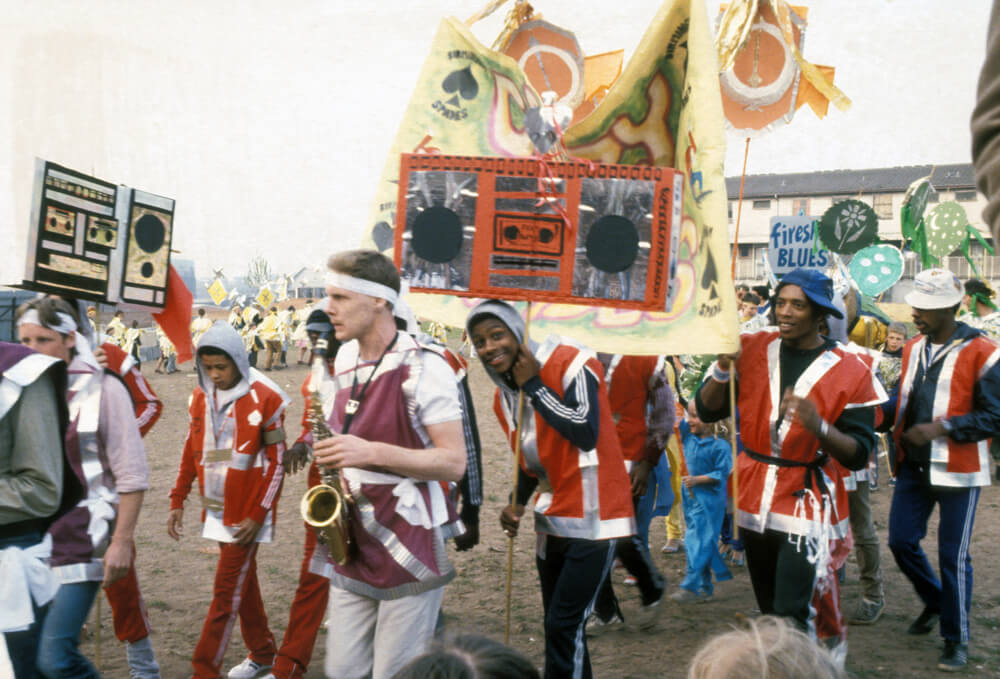
That May Day Fireshow attracted over 6000 people, more than three times the usual audience for the regular Recreation Department traditional bonfire and firework event in November. What impact did it have? It raised the aspirations of the council to create more visually arresting events in parks, and look at ways to better involve community associations and how to better collaborate with arts group – later on, it influenced the production of a community play in Wednesbury with Jubilee and Theatre Foundry. For Jubilee, it inspired their artists to think how to take the elements of a large scale project such as this and compress it into a smaller timescale and tour it to more locations in the borough – puppets, fire, music, procession, lanterns, lighting. Thus was born the community celebrations programme, 1985-88. Crucially, as a catalyst it brought together many of the disparate groups that Jubilee worked with it to create a cultural spectacle. It also led Jubilee to search further afield for expertise to help deliver its vision for local projects. The music workshop at CAWS also continued for several years, often providing a pool of musicians for other Jubilee projects and events. It informed the creation of future training opportunities, based on offering real life practical experience.
Second generation VHS film footage from the May Day event. Not brilliant quality, but it gives you a sense of these kinds of occasions.
Ironically, playing with fire had a downside. Shortly afterwards, their bus was travelling on its way for a MOT test when it erupted into flames on the M6 at Walsall, apparently due to an electrical fault. It was in the hands of engineers from the bus garage at the time and fortunately no-one was hurt. However, the bus was a write off, leading to cancellation of their work at the August Bank Holiday Sandwell Show and the postponement of a touring exhibition ‘Di Deh Yasso’, sharing stories of the history of the Afro-Caribbean community in the area.
